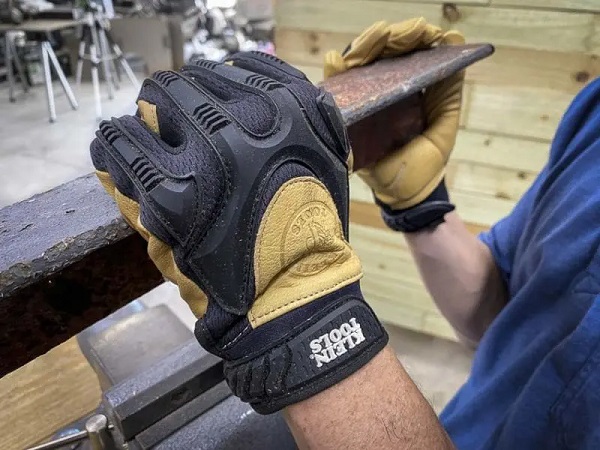Every construction site requires a variety of tools to ensure projects are completed efficiently and safely. Whether you are a seasoned contractor or a DIY enthusiast, having the right tools on hand is crucial for successful construction and renovation projects.
Here are ten essential tools that every construction site should have, along with their uses, benefits, and maintenance tips.
1. Power Drill
Uses
A power drill is indispensable for drilling holes and driving screws into various materials, including wood, metal, and plastic. It’s versatile and can be equipped with different bits to accommodate various tasks.
Benefits
- Efficiency: Speeds up drilling and screw-driving tasks compared to manual tools.
- Precision: Adjustable speed settings allow for better control.
- Portability: Many models are cordless, offering flexibility in movement.
Maintenance Tips
- Regularly clean the drill to remove dust and debris.
- Check and replace worn-out drill bits.
- Ensure the battery is charged and stored correctly.
2. Circular Saw
Uses
A circular saw is essential for making straight cuts in lumber and sheet goods. It’s ideal for framing, decking, and other structural components.
Benefits
- Speed: Cuts through materials quickly, saving time on the job.
- Versatility: Can be used for a variety of materials with the right blade.
- Portability: Lightweight models make it easy to transport around the site.
Maintenance Tips
- Keep the blade sharp and free of resin buildup.
- Regularly inspect the power cord for damage.
- Store the saw in a dry, protected area when not in use.
3. Level
Uses
A level ensures that surfaces are perfectly horizontal or vertical, which is crucial for structural integrity in construction.
Benefits
- Accuracy: Provides precise measurements for aligning and installing components.
- Versatility: Available in different types, including bubble, laser, and digital levels.
Maintenance Tips
- Store it in a protective case to avoid damage.
- Check for accuracy regularly and recalibrate if necessary.
4. Measuring Tape
Uses
A measuring tape is essential for measuring distances, lengths, and widths. It helps in marking and cutting materials accurately.
Benefits
- Convenience: Compact and easy to carry, making it accessible for quick measurements.
- Variety: Available in different lengths and materials (steel, fiberglass) to suit various needs.
Maintenance Tips
- Avoid kinking the tape to prevent damage.
- Clean the tape regularly to remove dirt and debris.
5. Safety Gear
Uses
Safety gear, including hard hats, gloves, safety glasses, and high-visibility vests, is crucial for protecting workers on construction sites.
Benefits
- Protection: Reduces the risk of injury from falls, debris, and hazardous materials.
- Compliance: Helps meet OSHA regulations and standards.
Maintenance Tips
- Regularly inspect gear for wear and tear.
- Replace any damaged or worn items immediately.
6. Hammer
Uses
A hammer is a fundamental tool used for driving nails, removing nails, and general assembly work.
Benefits
- Simplicity: Easy to use and requires no power source.
- Versatility: Available in various types (claw, sledge, framing) for different applications.
Maintenance Tips
- Keep the hammer head clean and free from rust.
- Ensure the handle is secure and free from splinters.
7. Screwdriver Set
Uses
A set of screwdrivers (flathead and Phillips) is necessary for fastening and removing screws in various materials.
Benefits
- Variety: Different sizes and types accommodate various screws.
- Durability: High-quality screwdrivers are made from robust materials, ensuring longevity.
Maintenance Tips
- Keep the tips sharp and free from damage.
- Store them in a dedicated toolbox to avoid loss.
8. Pry Bar
Uses
A pry bar is essential for prying, lifting, and removing materials, making it useful for demolition and assembly tasks.
Benefits
- Leverage: Provides excellent leverage for removing stubborn materials.
- Versatility: Can be used for various applications, from lifting floorboards to removing nails.
Maintenance Tips
- Keep the pry bar clean and free from rust.
- Store it in a toolbox to prevent bending or breaking.
9. Work Gloves
Uses
Work gloves protect hands from cuts, abrasions, and chemicals, providing a better grip on tools and materials.
Benefits**
- Safety: Reduces the risk of injuries from sharp or rough surfaces.
- Comfort: Provides better grip and reduces hand fatigue.
Maintenance Tips
- Wash gloves regularly to keep them clean.
- Replace any gloves that show signs of significant wear or damage.
10. Toolbox
Uses
A toolbox is essential for organizing and storing tools, making them easily accessible on-site.
Benefits
- Organization: Keeps tools sorted and reduces the risk of losing items.
- Portability: Many toolboxes are designed for easy transport.
Maintenance Tips
- Regularly clean and organize tools within the toolbox.
- Check for damage to ensure it remains functional and secure.
Conclusion
Having the right tools on a construction site not only enhances productivity but also ensures safety and efficiency. Investing in these ten must-have tools will prepare you for a wide range of tasks and challenges that arise in construction.
Remember to maintain your tools properly to extend their lifespan and performance, ultimately leading to successful project completion.
Also Read
Essential safety tips for construction workers: Protecting your team
How to choose the right contractors: Expert tips and advice

